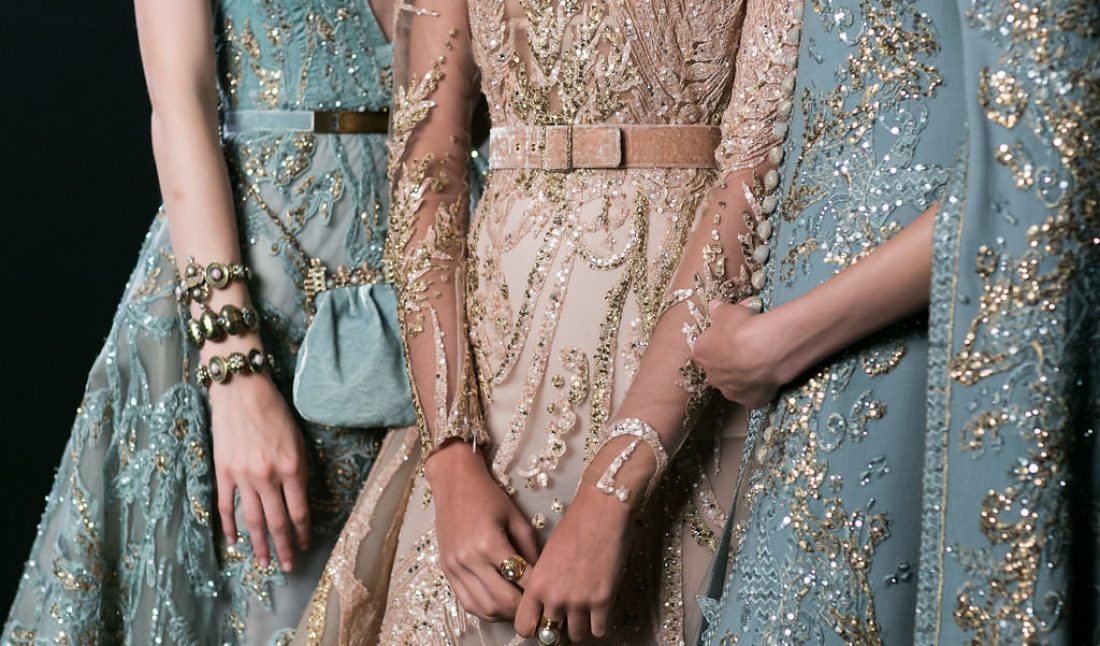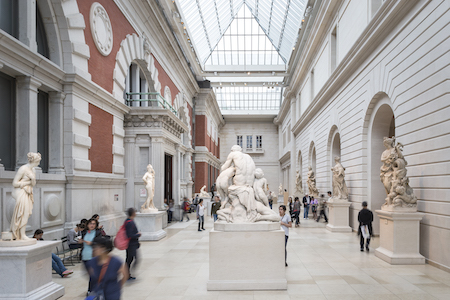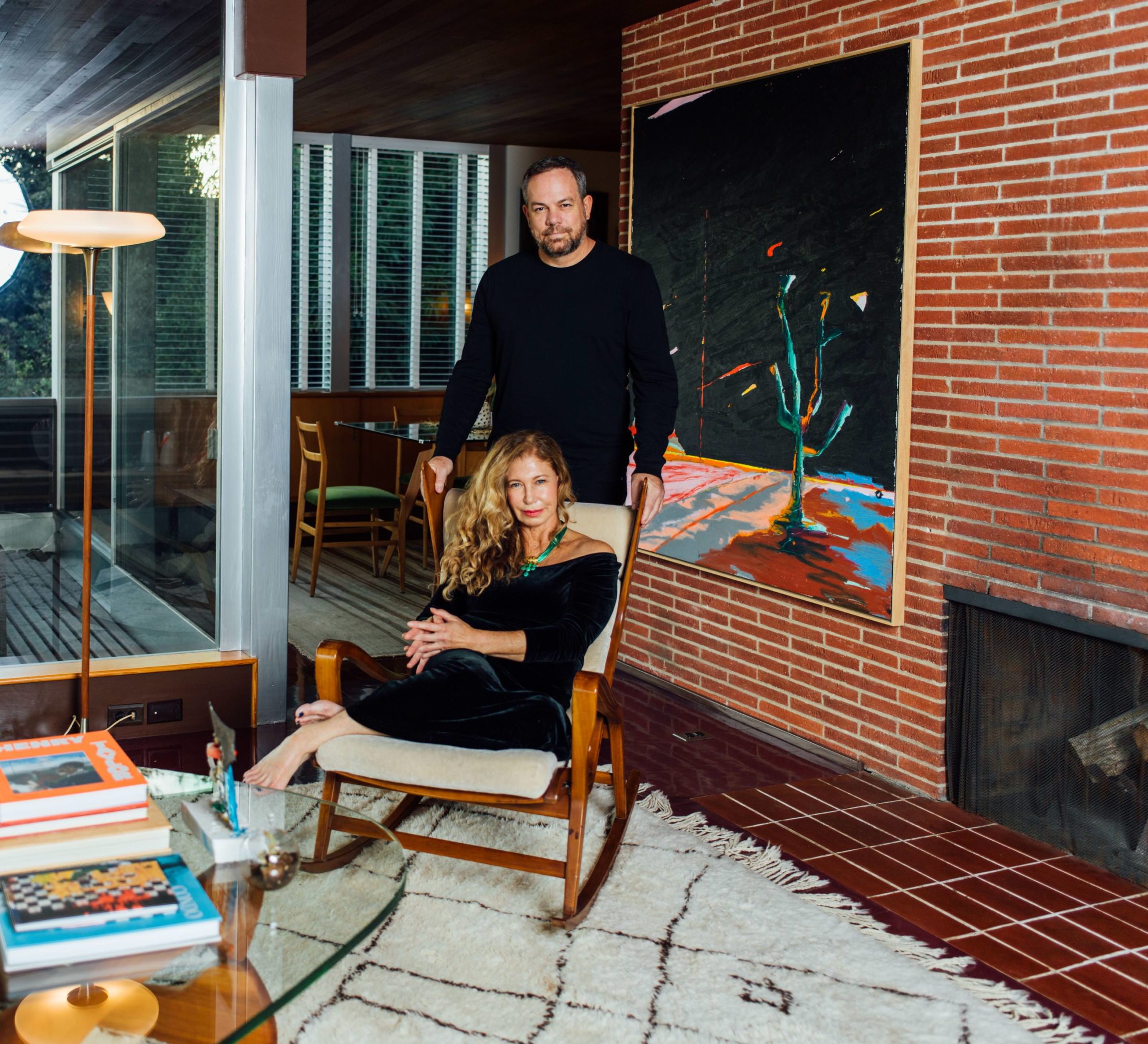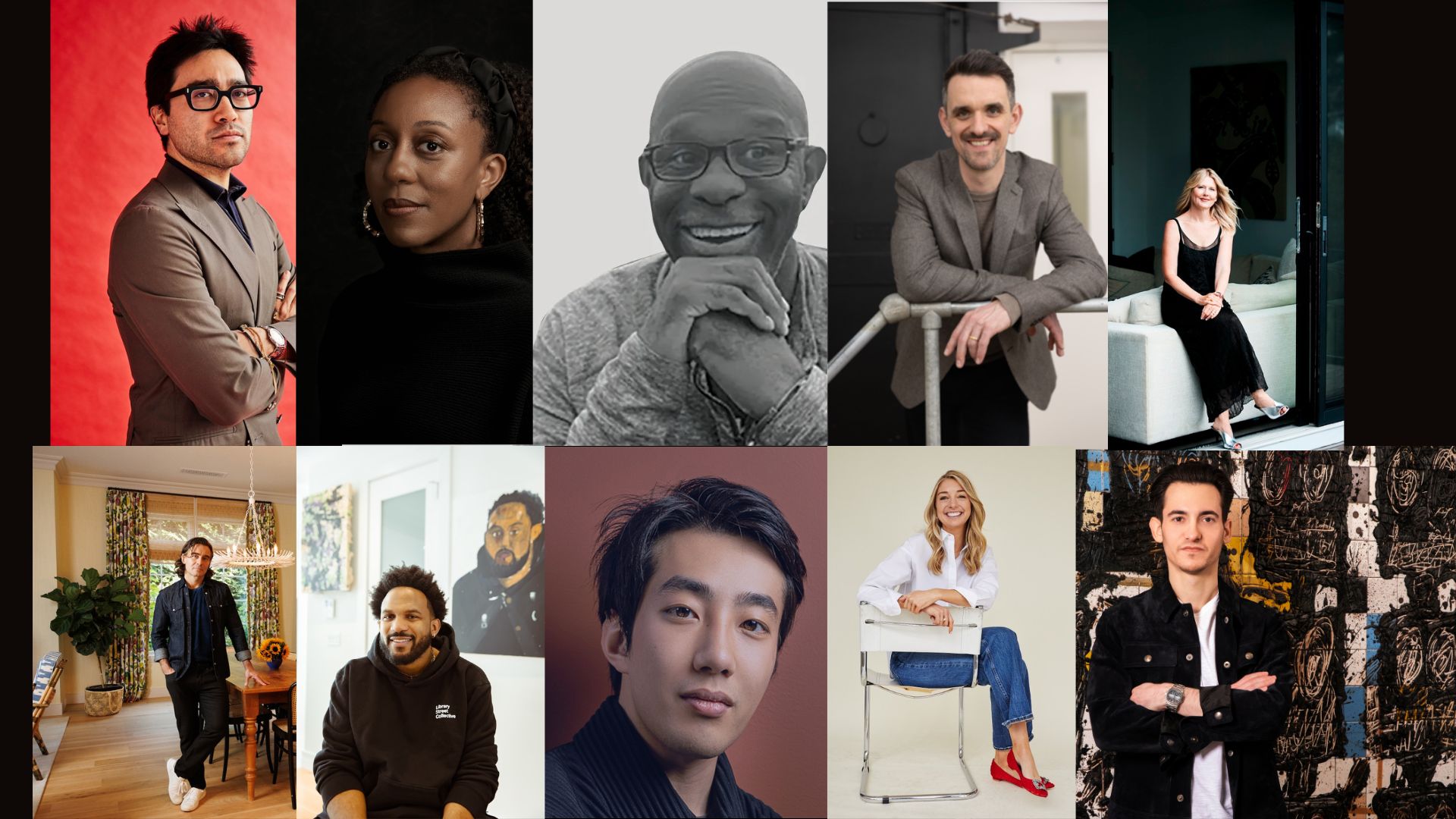By now, Elie Saab’s story, from his beginnings in Lebanon to being accepted into the selective circles of haute couture in Paris, is the stuff of legends. He fearlessly launched his own fashion label in Beirut at the age of 18. Saab’s first show in 1982 took place at Casino du Liban. He has said that he’ll never forget that the next day there were articles about his collection in newspapers next to pictures of the Lebanese War. His international career took off after he was the first non-Italian designer ever to show at Rome Fashion Week in 1997. This year, Saab opened his first U.S. flagship on Madison Avenue in New York.
After he debuted a Fall/Winter 2017–18 Haute Couture collection of medieval opulence (which he describes as his most embellished to date) and dreamy details, Whitewall spoke with the designer about, among other things, supporting a younger generation of artists and creative talent in Beirut.
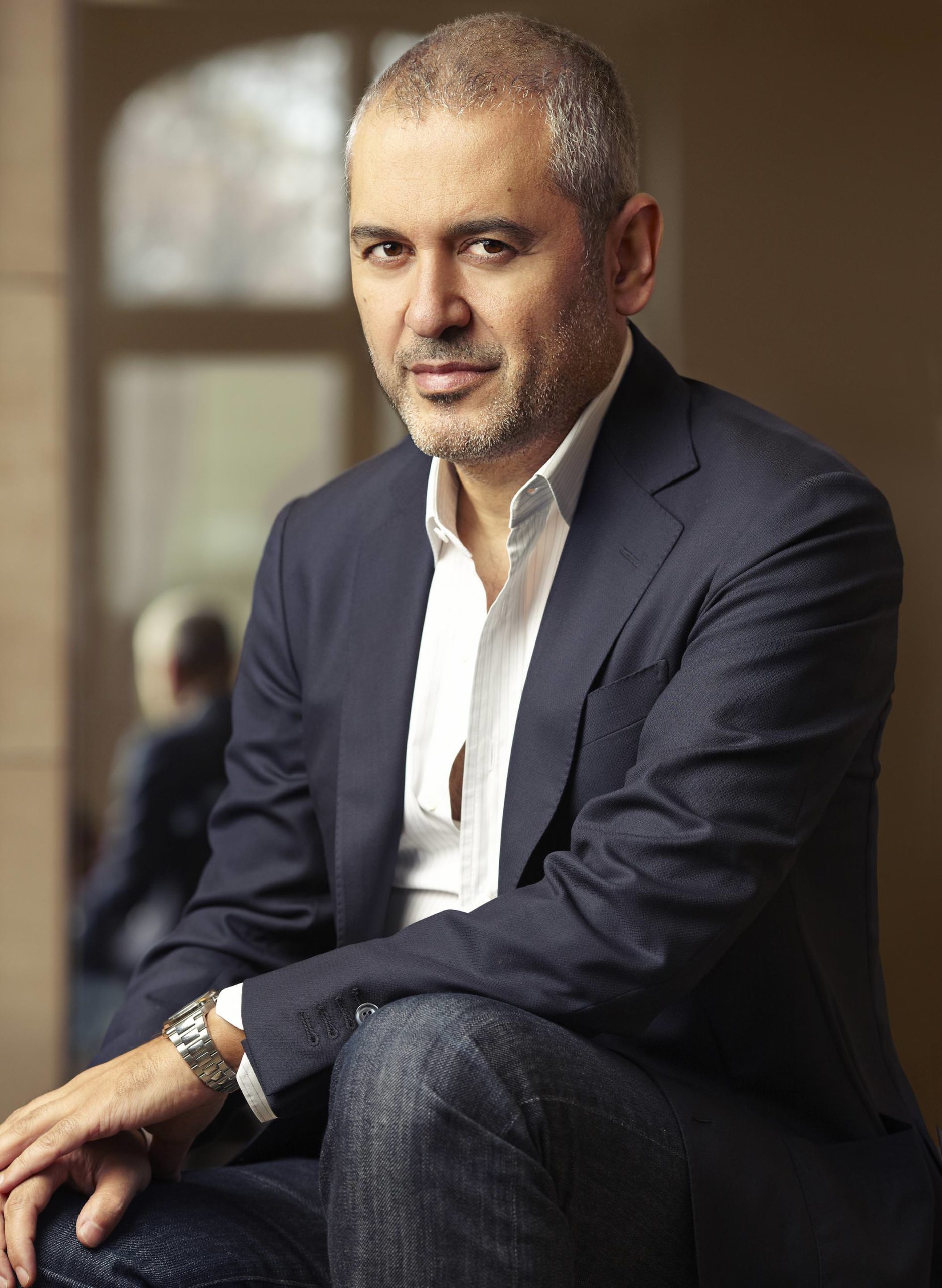 Elie Saab portrait by Oleg Covian
Elie Saab portrait by Oleg Covian
WHITEWALL: You’ve said that fashion was your destiny. That your “perspective on women was different: I have always been surrounded by beautiful women who inspire me and I wanted to underline their personalities.” Who were some of the women that influenced you at an early age? How would you describe their style?
ELIE SAAB: I started cutting patterns and creating dresses for my sisters, my cousins, and neighbors. From a young age, I used to look at the world around me in a different way from other children. I spent my time watching people surrounding me—the way they walk or dress. I wouldn’t see them as they were, but as they could be if they were dressed differently. I would notice each and every “misstep”—the wrong color, the wrong length, a skirt too short, or a jacket too tight. My perspective on women was different; I always wanted to underline their elegance and femininity. The circumstances drove me to where I am now.
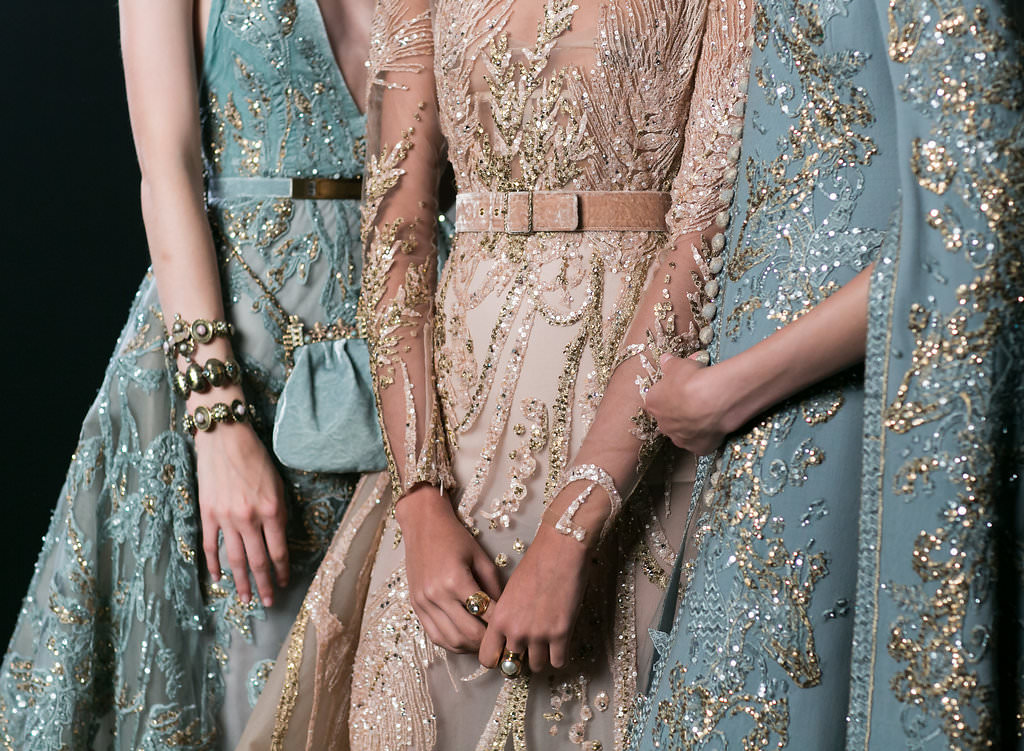 Backstage at Elie Saab haute couture fall/winter 2017-18
Backstage at Elie Saab haute couture fall/winter 2017-18
WW: Looking back, what do you think made you so fearless to launch a fashion label in Beirut at the age of 18?
ES: It was hard at first, as the fashion industry did not really exist in Lebanon. In the beginning my parents weren’t thrilled with my choice. They probably would have preferred if I had become a doctor or a lawyer, and I totally understand their position; they wanted a secure profession for their son. Getting to that point was not easy. I had to teach myself most of the business, but I persevered and continued to believe in my career choice. I have always been very hard on myself and always feel the need to do more and better. Nothing comes easily; you should work hard for it and believe in what you present. When the success started to come, they were reassured and blessed my resolution.
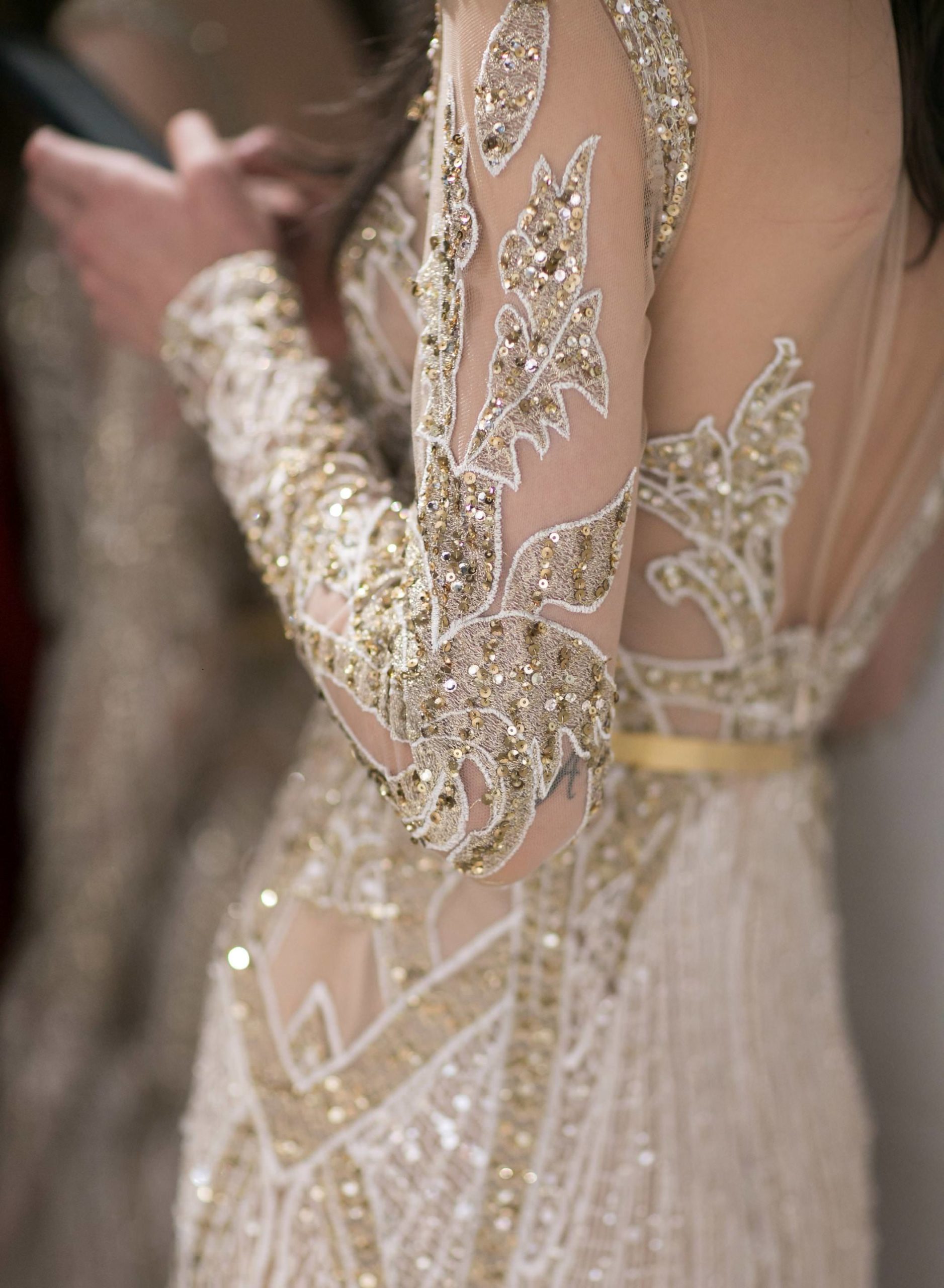 Backstage at Elie Saab haute couture fall/winter 2017-18
Backstage at Elie Saab haute couture fall/winter 2017-18
WW: You’ve described your inspiration as limitless when creating haute couture. What about designing haute couture continues to drive you?
ES: Haute couture allows me an infinite creativity. There is no limit to what I can create and what the haute couture atelier can produce. My designs bring my clients’ wishes to life and make people dream. I feel that I still have not created the perfect dress, that I can always go further in term of creativity.
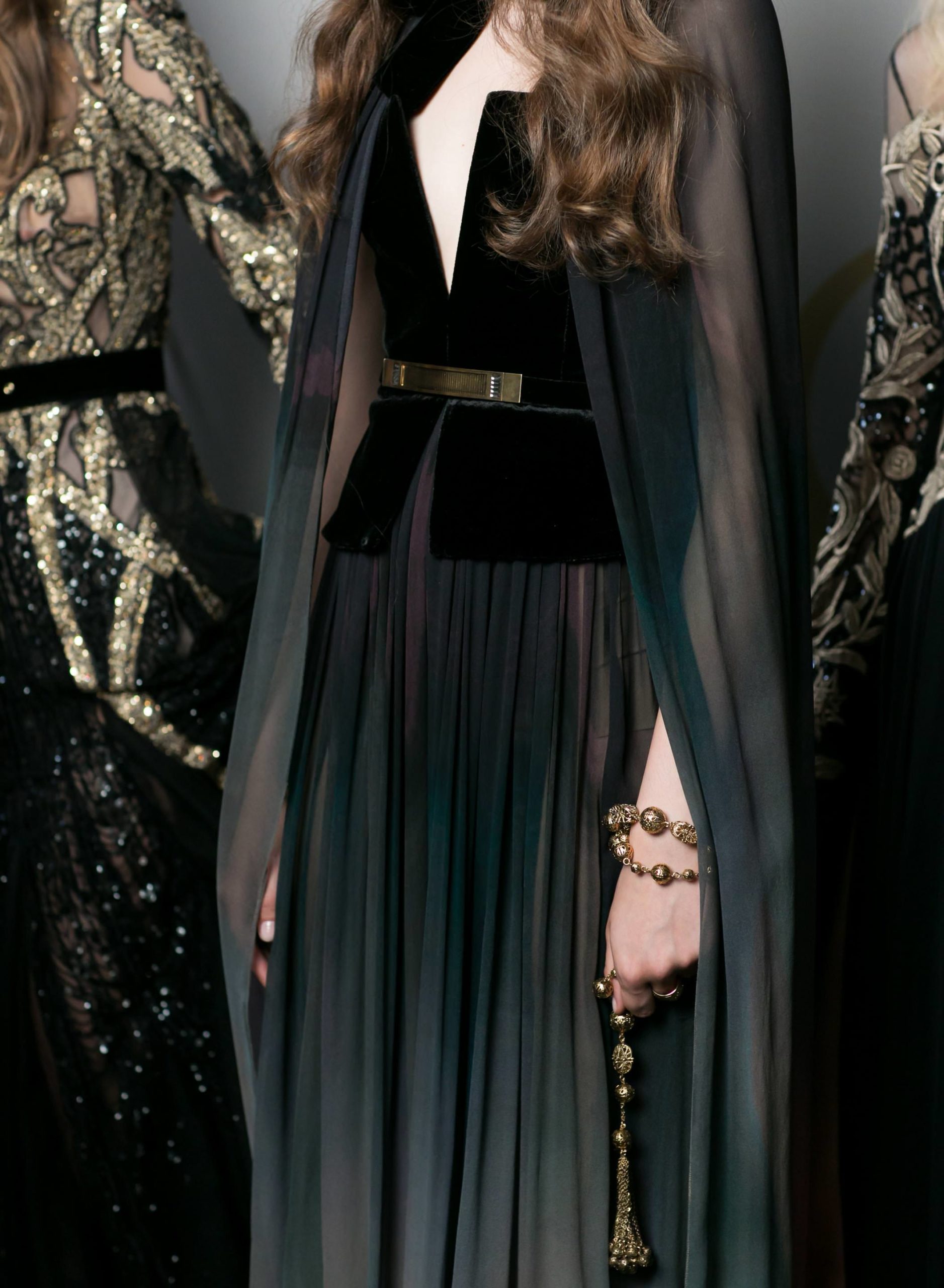 Backstage at Elie Saab haute couture fall/winter 2017-18
Backstage at Elie Saab haute couture fall/winter 2017-18
WW: You were the first non-Italian designer to show during Rome Fashion Week. What did that mean to you at the time?
ES: It was the beginning of my international career. I knew Rome was an important step that would lead later to Paris. I remember showing a Fall/Winter Couture collection and it was an amazing experience. There were a lot of local and international press as well as clients from all over the world; it was an unforgettable experience. It brought wonderful reviews and everyone raved about it.
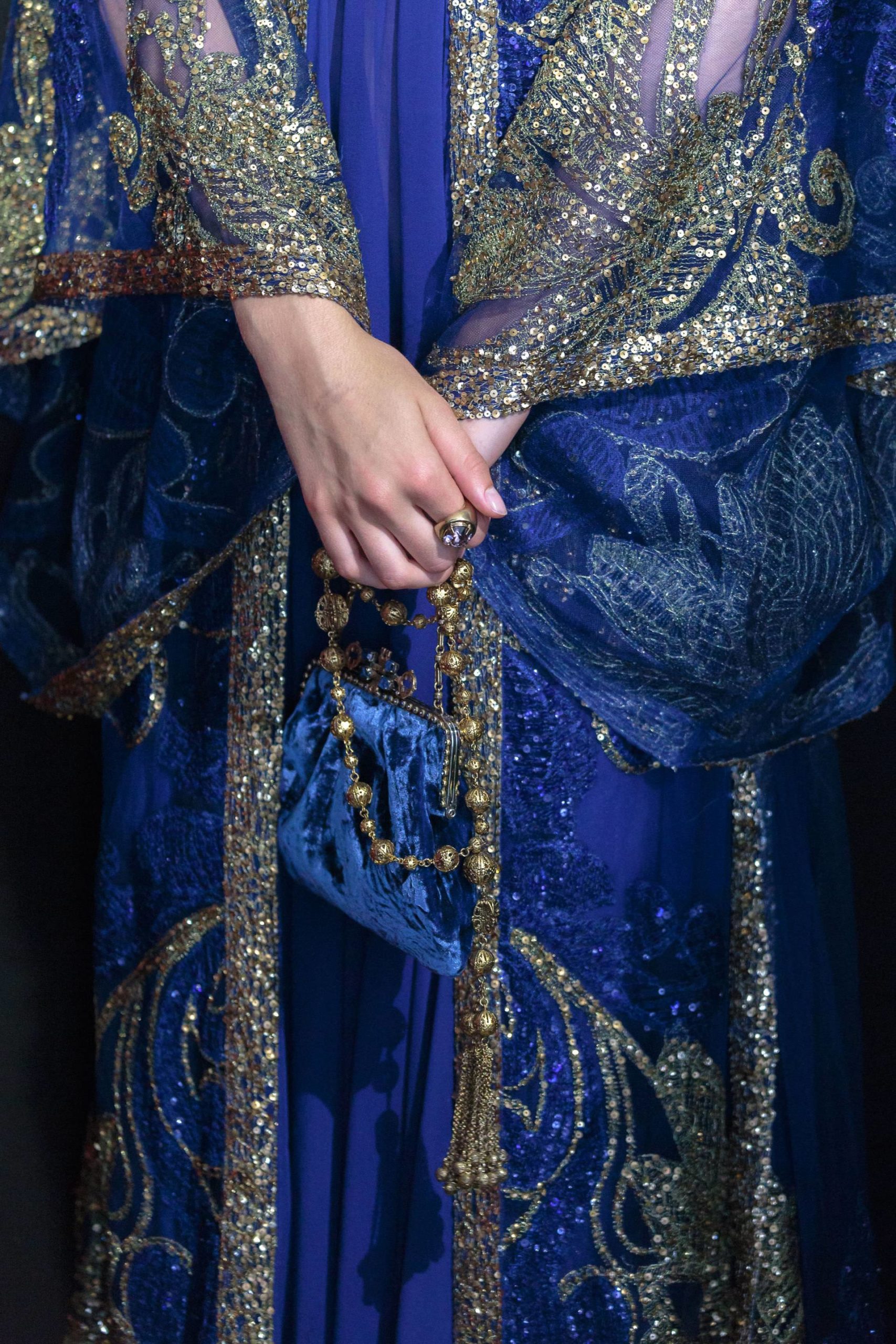 Backstage at Elie Saab haute couture fall/winter 2017-18
Backstage at Elie Saab haute couture fall/winter 2017-18
WW: With each season, you’ve said you don’t want to shock your clients, but share a new message, sticking to the timeless Elie Saab codes. What design codes do you employ to achieve that sense of simplicity and glamour while also creating the fantasy of desire?
ES: I start with the inspiration: women, always women. For each collection, I try to magnify their beauty. As for the codes, the waist is one of the most important aspects of the silhouette. I work around it. There is no secret. I work on each collection to make women beautiful. I think the waist is what balances the silhouette; this is the reason why I emphasize it, always. When it comes to simplicity and glamour, I prefer to use light fabrics like mousseline, lace. I like movement. It creates a flow when the silhouette moves.
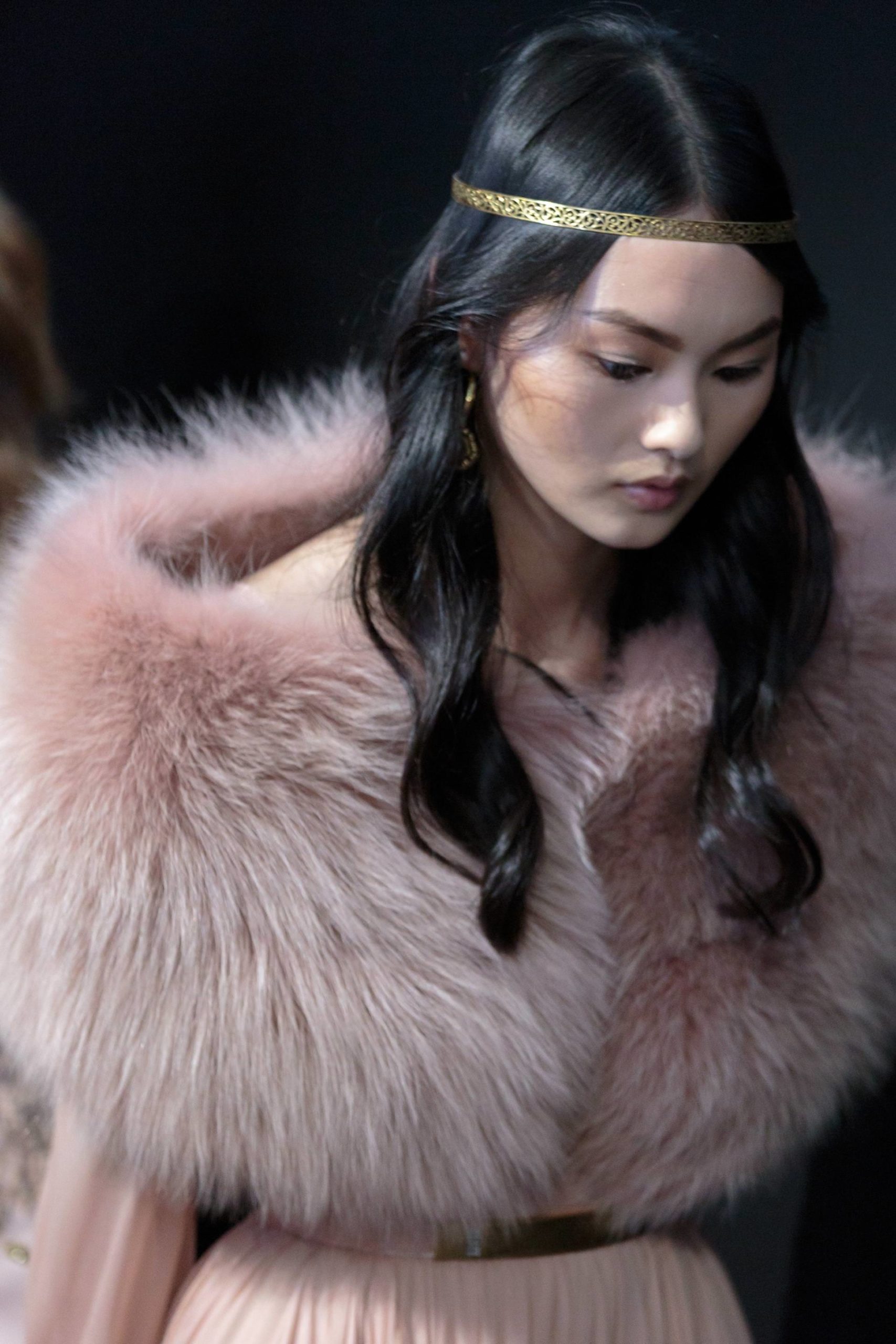 Backstage at Elie Saab haute couture fall/winter 2017-18
Backstage at Elie Saab haute couture fall/winter 2017-18
WW: What can you tell us about the inspiration behind the Fall/Winter 2017–18 Couture collection?
ES: This collection is about the opulence and wild beauty of the medieval magnificence and was designed with a touch of darkness but still super-feminine. I have always placed women at the center of my creations, but for this collection, I wanted to show a fearless yet feminine woman and accentuate the strength and power that arise beyond her appearance.
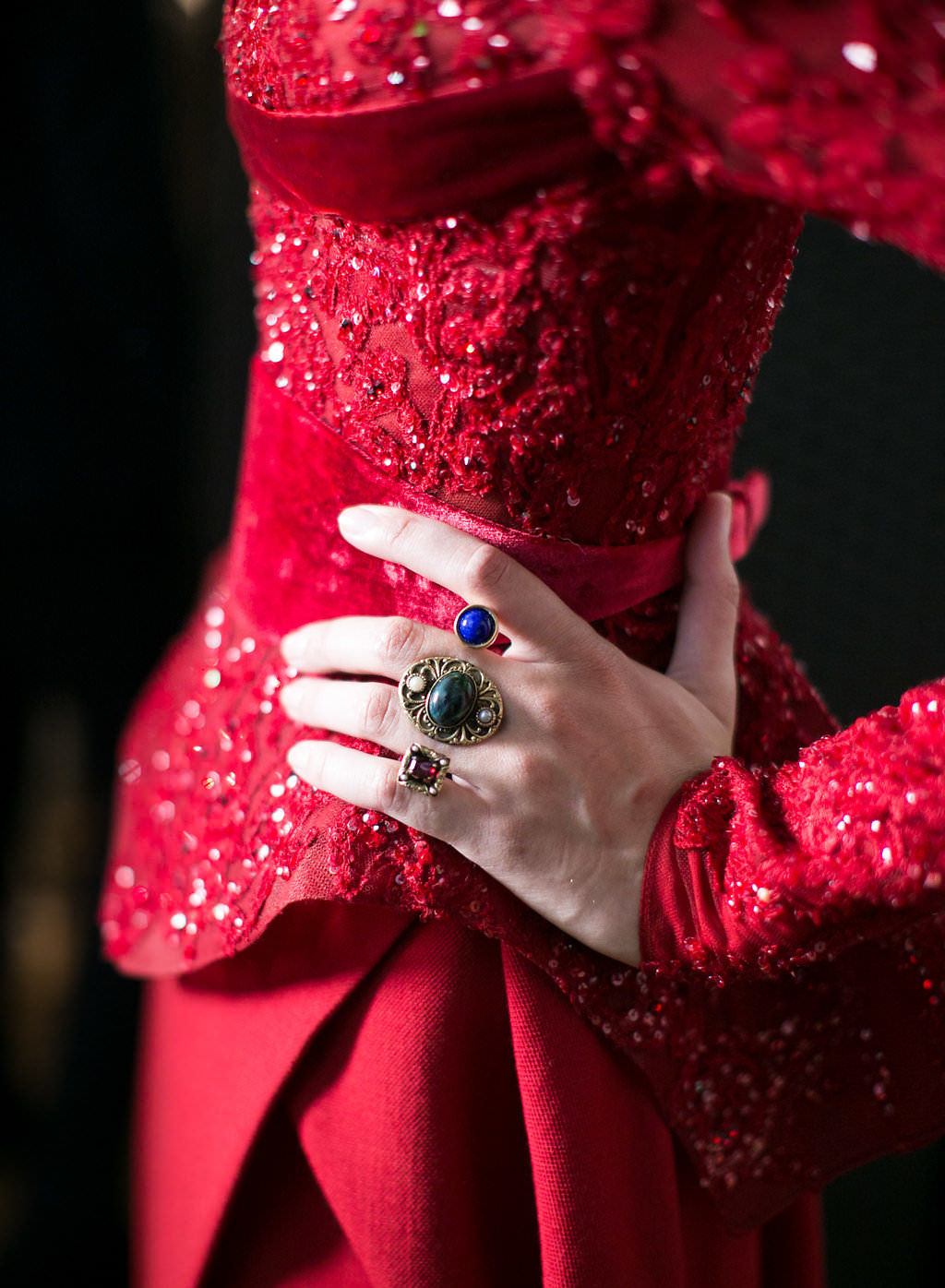 Backstage at Elie Saab haute couture fall/winter 2017-18
Backstage at Elie Saab haute couture fall/winter 2017-18
This collection is likely one of the most embellished I have designed for a long time. Some gowns took more than five hundred hours to finish. I played with materials; velvet and lace, mousseline and tulle intertwine with sequins, pearls, or crow feathers, to create unique silhouettes that you’ll only find in haute couture. Elements such as gold headbands, gold filigree, deep colors, or rich materials remind of the medieval age.
WW: This year, you opened the first U.S. flagship on Madison Avenue in New York. You’ve opened flagships internationally quite carefully and deliberately. What about the location appealed to you?
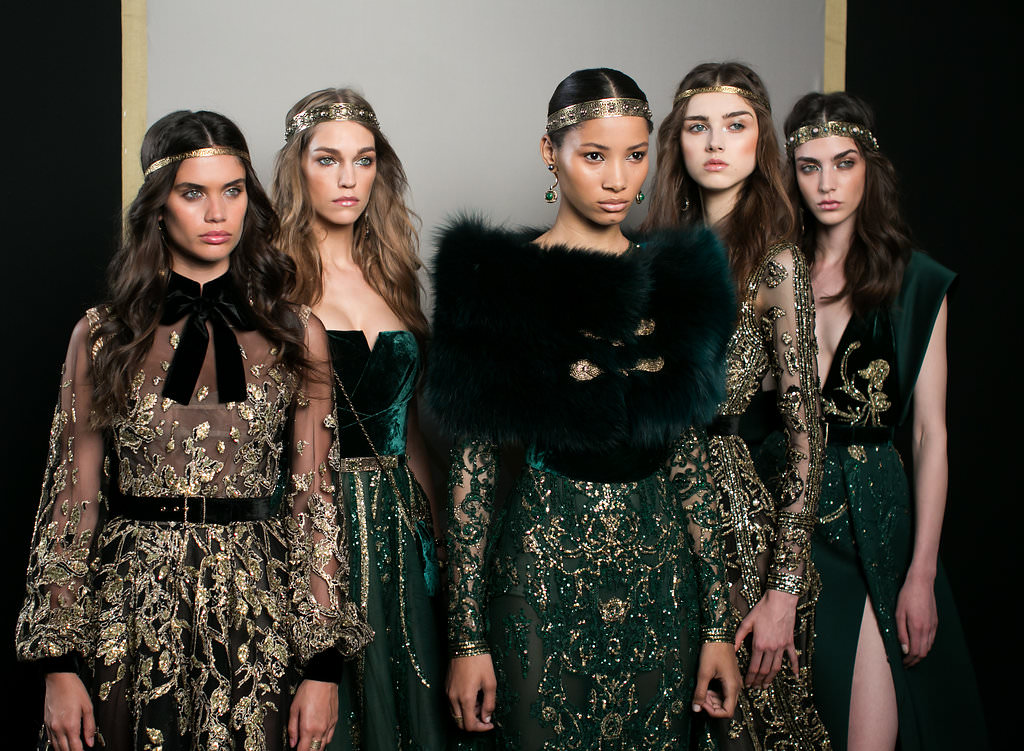 Backstage at Elie Saab haute couture fall/winter 2017-18
Backstage at Elie Saab haute couture fall/winter 2017-18
ES: I was looking for the right location for some time now. I knew that my flagship in New York had to be on Madison. I was just waiting for the right location. I wanted the flagship to be full of light, and the eight windows allow it. I was also looking for a two-story building to present daywear and accessories on the ground floor and cocktails and evening on the first floor. We worked on several months on the renovation to create a new space a beautiful staircase.
WW: Last month, the third annual Elie Saab Grant went to French photographer Nolwenn Brod. The grant includes a three-week residency in Beirut to produce a body of work with the city as the backdrop. What did you initially want to set up the Elie Saab Grant?
ES: I wanted to encourage the young generation of artists; give them some support to pursue their career and, at the same time, add value to my country. I have a responsibility toward my country to reflect a positive image, and I believe that any successful business in Lebanon—whether it is a fashion brand, or any leading company in a different industry—will contribute to this positive image of the country abroad.
I feel a big responsibility, which gives me more motivation when I feel that I contributed in putting Lebanon on the international fashion map.
WW: What are you hoping the grant will do for its recipients and the city of Beirut going forward?
ES: First of all, I sincerely hope it will help them to pursue their career in photography. Making it to the 10 finalists of Hyères is already an achievement on its own. As for Beirut, I want to promote my city and my country as much as I can. Showing it through the eyes of the talented artists will surely help to fight against cliché and give a new dimension to its architecture and people.
WW: This June, the first class of 50 students graduated with a bachelor’s degree in fashion design from the fashion program you helped launch at the Lebanese American University with London College of Fashion. Of what significance will that moment be for you?
ES: I am proud of having created a profession which didn’t exist in my country before. Today, I want to help and encourage talented young generations to pursue a career in fashion design.
My objective for launching the fashion design program with LAU is to provide the Lebanese students with high educational standards in the field in order to further improve the fashion scene and grant students a reputable degree. Some families don’t want their children to live abroad or don’t have the means to do so. By offering this program in the region, we will also promote the county and make Lebanon again a cultural destination.
The academic side is not my specialty and I leave this responsibility to LAU, an institution of higher education, which ensured the creation of a world-class program. We both have the same vision, and I make sure to offer any assistance that might be beneficial for the program and the students.
WW: You’ve said of all the titles you’ve been given, you most prefer “the Lebanese designer Elie Saab.” Why is that?
ES: Because I am very proud to represent my country as well as the region in both a creative and business sense. The journey was very challenging, and I am very grateful to the people who believed in my work. This gives me the greatest satisfaction and more responsibility to maintain what I have done.
This article appears in Whitewall‘s fall 2017 Couture Issue.







